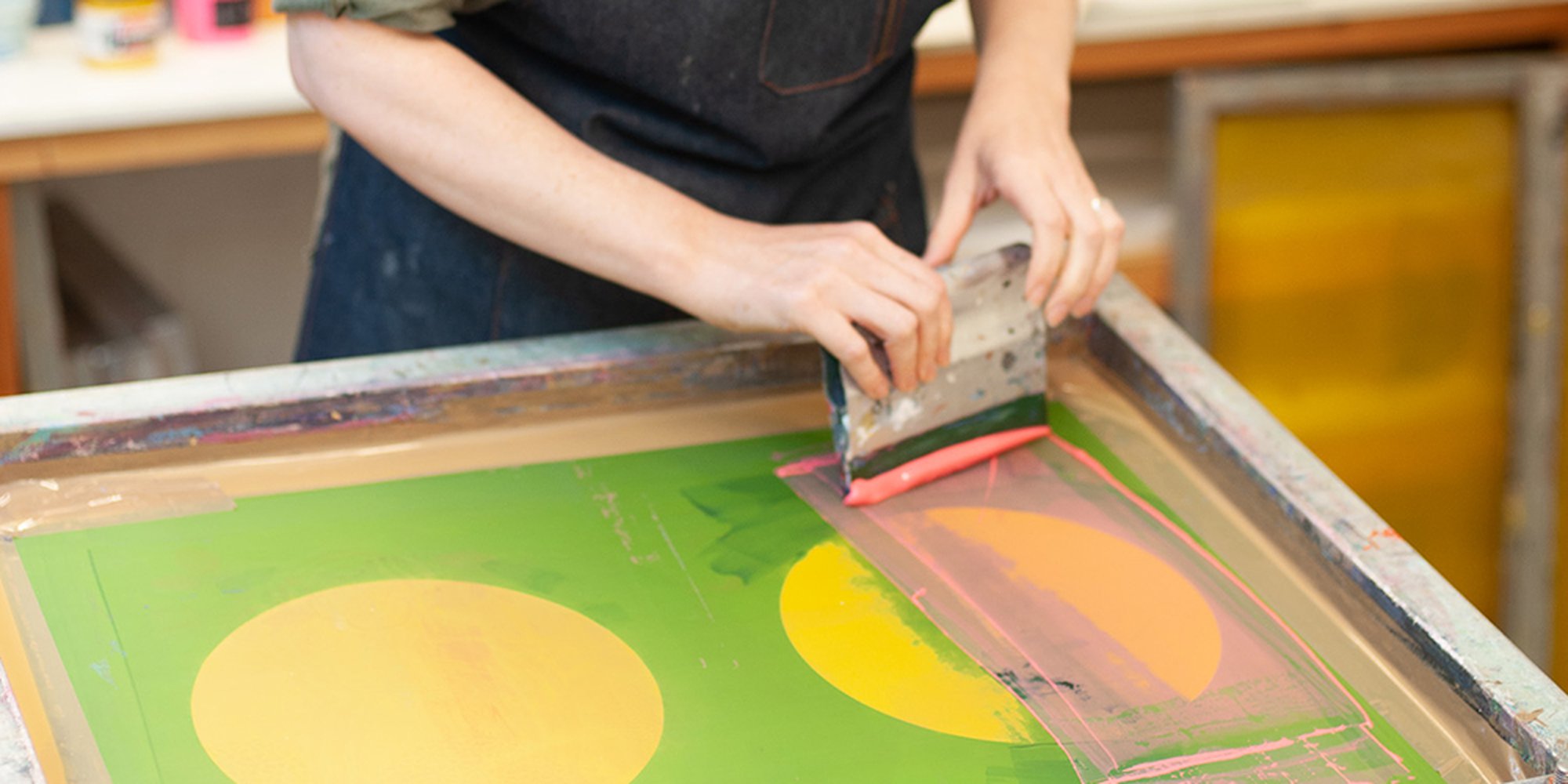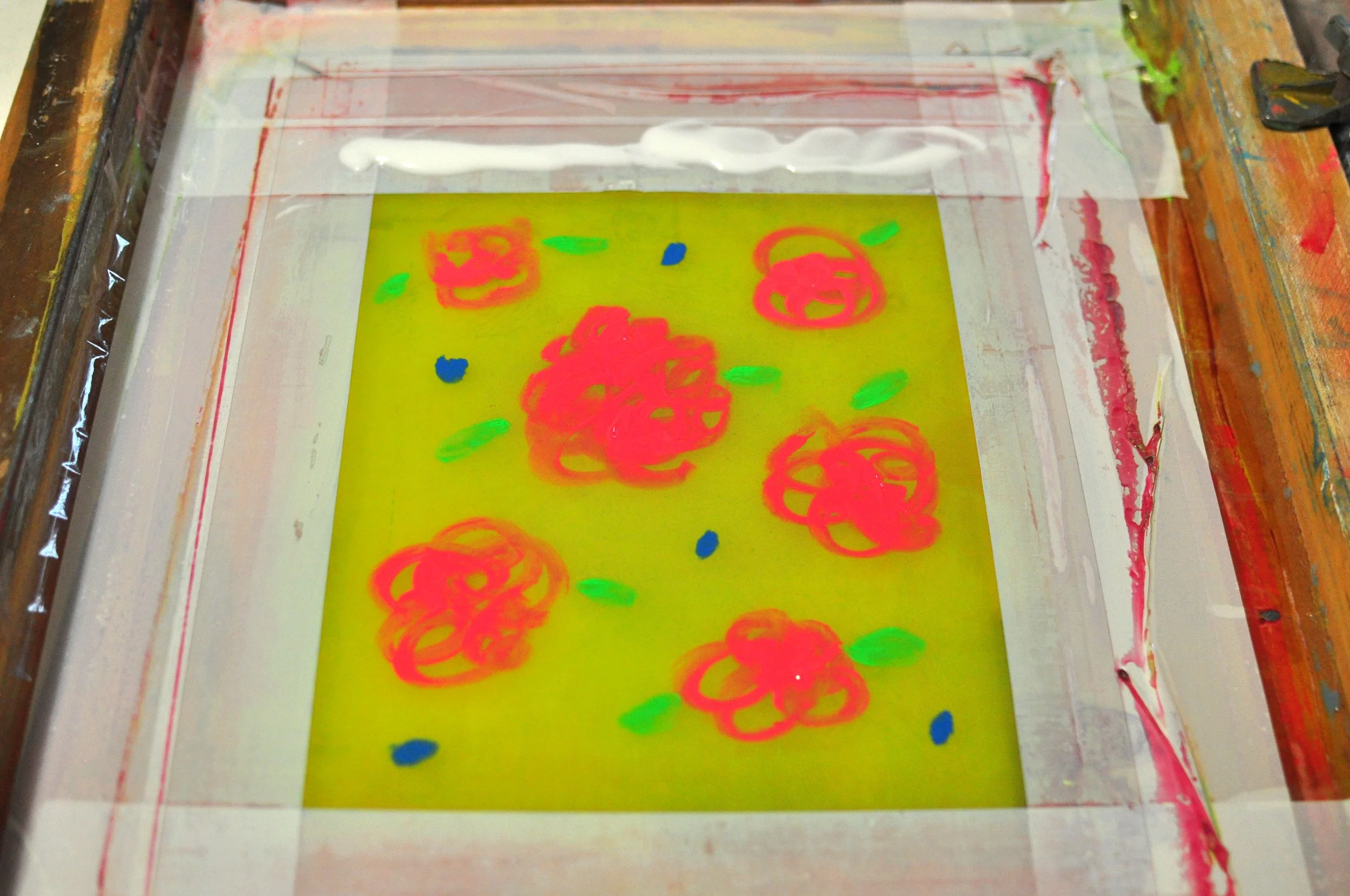Discover the Various Sorts Of Screen Printing Techniques for Your Next Task
Screen printing provides a varied array of methods that can boost any type of innovative project. From traditional approaches like serigraphy to contemporary advancements such as direct-to-garment printing, each strategy has its special advantages. Specialized alternatives, including green and metallic inks, present a lot more opportunities. Recognizing these methods can significantly influence the final end result. The difficulty lies in picking the most suitable method for particular demands and desired results. What elements should one think about?

The Basics of Screen Printing
Screen printing may seem complicated, it is essentially an uncomplicated procedure that includes transferring ink via a mesh screen onto different surfaces. The technique begins with the development of a stencil, which specifies the design to be published. This pattern is affixed to a mesh screen, normally constructed from polyester or nylon. When the stencil is in place, ink is related to the screen and pressed with the mesh making use of a squeegee, causing the preferred pattern being printed on the underlying material.
Screen printing can be executed on a variety of substratums, including paper, fabric, and plastic, making it a versatile option for different jobs. The process allows for detailed styles and lively shades, making it popular in sectors such as fashion, art, and advertising and marketing. Recognizing these essentials furnishes people with the foundational understanding required to discover advanced strategies in screen printing.
Conventional Screen Printing Techniques
Traditional screen printing methods have actually been employed for centuries, maintaining the workmanship and creativity of this approach. This strategy uses a mesh screen to transfer ink onto a substratum, such as fabric or paper, permitting lasting and vivid designs. The process starts with developing a stencil, which obstructs certain areas of the screen to regulate where the ink will certainly be applied.
One prominent method is serigraphy, often utilized for minimal versions and creative prints. One more is making use of water-based inks, which are eco-friendly and provide a soft feeling on textiles - 10:9 Design contact. Additionally, typical approaches can consist of hand-operated printing, where craftsmens apply ink with a squeegee, guaranteeing precision and focus to information
These strategies stay valued in the industry for their responsive high quality and the distinct textures they generate, interesting both consumers and creators that appreciate the heritage of screen printing.
Digital Screen Printing Innovations
As the need for faster manufacturing and modification in the printing market has risen, electronic screen printing developments have actually become a game-changer. This technology mixes conventional screen printing approaches with digital procedures, enabling for fast prototyping and detailed layouts that were previously challenging to accomplish. One substantial development is the intro of direct-to-garment (DTG) printing, which facilitates top quality, full-color prints on various textiles without the demand for screens. Furthermore, innovations in ink solutions have actually caused eco-friendly alternatives that preserve lively colors while minimizing ecological influence. Making use of automated systems further simplifies production, decreasing labor expenses and improving precision. These innovations not only satisfy little batch orders and personalized styles however additionally permit quicker turnaround times, making them excellent for companies concentrated on conference customer needs in a hectic market. Digital screen printing, as a result, represents an important advancement in the domain of printing methods.
Specialized Screen Printing Approaches
Exploring specialty screen printing methods exposes a diverse variety of techniques that push the limits of creativity and performance in the printing sector. Amongst these, glow-in-the-dark inks give an unique aesthetic impact, making layouts come to life in low-light conditions. Metallic inks, known for their sparkling coating, include a touch of high-end to printed materials. One more innovative method is discharge printing, which removes color from the textile rather than adding ink, leading to a soft, classic feel. High-density printing creates an elevated structure externally, enhancing tactile involvement. Furthermore, water-based inks are gaining popularity for their vivid colors and reduced ecological influence. Each of these specialized techniques satisfies specific design needs, making it possible for brand names and musicians to create standout items that resonate with their audiences. By leveraging these techniques, companies can raise their screen printing tasks to new heights, making sure remarkable impacts.
Eco-Friendly Screen Printing Options
Green screen printing choices are gaining grip as the industry moves towards sustainability. Lasting ink choices and using biodegradable products are key elements in decreasing the environmental influence of the printing process. By taking on these techniques, screen printers can add to a much more lasting future while maintaining top quality results.
Lasting Ink Options

Biodegradable Products Usage
As the screen printing market progresses, the unification of biodegradable materials is becoming increasingly essential for ecologically mindful methods. Manufacturers and designers are check here now exploring inks and substrates made from all-natural, renewable sources that disintegrate more successfully than standard counterparts. These eco-friendly choices lower plastic waste and reduce environmental influence, straightening with the growing demand for lasting products.
Usual examples consist of water-based inks and organic cotton materials, both of which lessen unsafe chemicals and advertise eco-friendliness. Brands that take on these materials commonly enhance their market allure, attracting customers that focus on sustainability. As understanding of environmental concerns remains to increase, the change towards naturally degradable materials in screen printing is most likely to get energy, promoting a greener industry criterion.
Picking the Right Technique for Your Task
How can one identify the most appropriate screen printing method for a details project? The decision rests on a number of factors, consisting of the material to be published on, the intricacy of the layout, and the desired manufacturing quantity - 10:9 Design Texas. Direct-to-garment printing is suitable for detailed styles with many shades, while typical screen printing excels for bigger runs of simpler graphics.
In addition, consideration of the end-use of the printed item is important. For outdoor applications, methods that use resilience and climate resistance, such as plastisol ink, may be liked. On the other hand, environmentally-conscious jobs may profit from naturally degradable materials or water-based inks.
Eventually, recognizing the job's unique demands permits an enlightened selection, ensuring both aesthetic allure and useful long life. By evaluating design complexity, material compatibility, and manufacturing scale, one can effectively select one of the most suitable screen printing method to satisfy their project's goals.
Regularly Asked Questions
What Is the History of Screen Printing?
Screen printing came from old China around 1000 AD, evolving through Japan and Europe. By the 20th century, it ended up being popular in commercial art and fashion, reinventing just how styles were generated and distributed internationally.

Exactly how Do I Prepare Artwork for Screen Printing?
To prepare art work for screen printing, one should assure high resolution, utilize an ideal color setting, produce different layers for every color, and convert message to details, ensuring compatibility with the printing process and desired end result.
What Materials Are Ideal for Screen Printing?
The best products for screen printing include premium inks, sturdy screens, and ideal substrates like cotton, polyester, or blends. Additionally, using suitable solution and squeegees can boost the printing process and outcomes.
Can I Screen Print in the house?
Yes, screen printing in your home is feasible. With the right materials, configuration, and methods, individuals can create top quality prints. Nevertheless, careful factor to consider of work space and tools is necessary for effective outcomes.

What Are Typical Blunders in Screen Printing?
Common mistakes in screen printing consist of improper exposure times, poor ink uniformity, imbalance of screens, insufficient cleansing of products, and overlooking to evaluate prints. These errors can compromise the quality and accuracy of the last item.
Screen printing might seem complex, it is fundamentally a simple procedure that entails transferring ink through a mesh screen onto various surfaces. As the demand for faster manufacturing and customization in the printing industry has actually surged, digital screen printing advancements have emerged as a game-changer. Exploring specialized screen printing techniques exposes a diverse array of techniques that push the borders of creativity and performance in the printing industry. The finest products for screen printing include high-grade inks, durable displays, and ideal substratums like cotton, polyester, or blends (10:9 Design Embroidery). Common errors in screen printing consist of incorrect exposure times, poor ink consistency, imbalance of displays, not enough cleansing of materials, and overlooking to evaluate prints